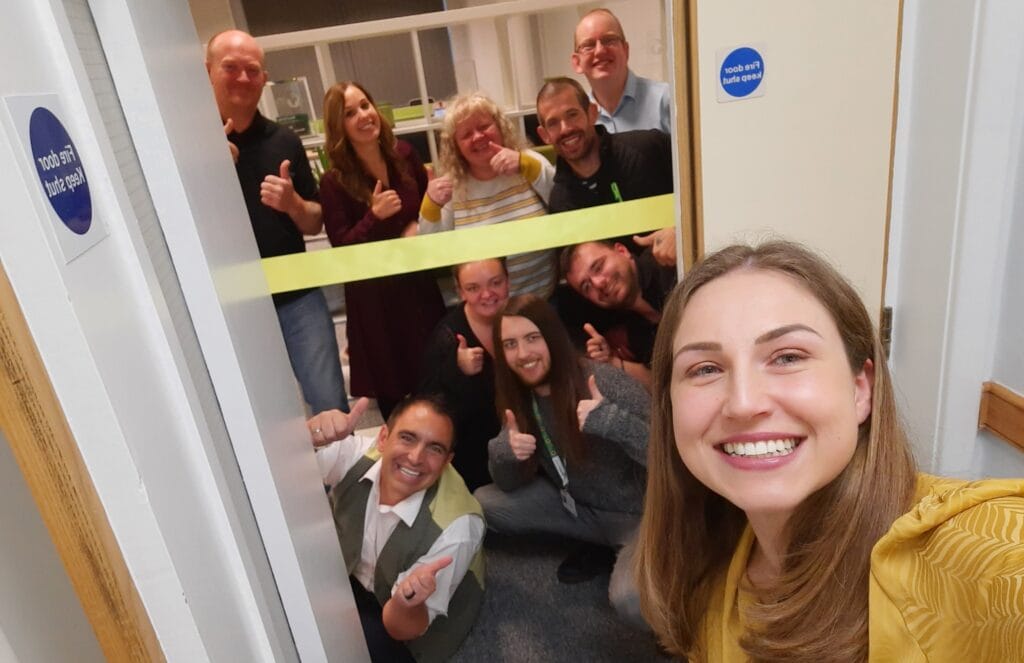
Diversity of access and inclusion regardless of race, gender, background etc. are integral to the development of a just and equal society in which a person’s physical, cognitive, social, or emotional experiences are validated and protected. We often think of access as merely a means of providing entry or egress to a building, access to information, or something that simply benefits the intended user (when it comes to access, this is often a disabled person). However, what we don’t often think about is the significant effects that diversity can have on the well-being of our society or the benefits to businesses, public bodies, and individuals who are seen to be welcoming all types of people.
The journey to inclusion, especially within private businesses, often begins with nurturing diversity, and the means of creating diversity can often be simple and inexpensive. At Direct Access, we have managed to employ 86 percent of disabled people, not due to our line of work necessarily, but because we have successfully integrated this philosophy into our recruitment process, communicated effectively with our disabled team, and acknowledged the equity that comes along with a best practice approach. Today, we would like to share foundational yet invaluable information that has allowed us and many of our clients to become inclusive.
Take that first step
One of the great mantras preached in life is the fact that to achieve anything you must take that first step. When it comes to inclusion, it begins with learning and acknowledging the fact there is work to be done. Education in different kinds of disabilities, the accessibility needs required because of those disabilities, and an understanding of the diversity of human experience is a powerful first step. This is because education on these issues creates a responsibility on the part of architects and building managers.
The reason many businesses, institutions, schools etc. are not accessible is often down to the fact that people simply do not know enough about how to be inclusive. So the best thing you can do is begin to consider diversity and inclusion if what you are doing involves the experience of people who are different from yourself.
Once you start, keep going.
Once you have reasonable knowledge of what defines diversity, consider how you might implement these ideas into your organisation. Although a big part of inclusion is disability access, and by extension, compliance with the law, you should consider these ideas not as a “tick-box” to be filled but as a journey to undergo and build upon. Then, once you have started to reach the minimum standards of accessibility, get creative and consider how you could provide inclusion for a wider demographic of disabled people and non-disabled people.
For instance, a height-adjustable desk would benefit not only wheelchair users, but also people of short stature, while an automatic door would benefit people with dexterity impairments, parents with prams, or people carrying heavy objects into a facility. Thinking about how inclusion can go beyond the requirement in this way showcases not only your willingness to be innovative, but the diversity of ideas will inevitably lead to a greater amount of satisfied people.
If it doesn’t make a difference, don’t do it.
Accessibility and inclusion are as if not more important than aesthetics when it comes to the design of a physical or virtual environment, not merely since zero consideration for the diversity of experience is morally questionable. Implementing poor design choices, such as a lack of colour contrast or signage within a building, reflects badly on the experiences you are creating for people, which in turn can then lead to financial losses or the damaging of your reputation.
The benefits of diversity are so plentiful to the extent that we could not list them all here. But what it boils down to, ultimately, is that if you are doing something that does not benefit a group or individual people, you probably shouldn’t bother doing it.
Treat people as individuals
Understanding that everyone has their own way of relating to the world around them is vital to the concept of diversity. When it comes to disabilities, you’ll often find that, particularly among people with cognitive disabilities, their experiences are uniquely combined or on a spectrum. For example, an autistic person might sometimes display signs of ADHD or depression, while another person might be categorised as DeafBlind and be, as the term suggests, both blind and deaf.
However, we must try not to get caught up too much in terminology and labels and make concerted efforts to reach out and understand different people and their backgrounds. And with the power of the internet, communication with these marginalised groups has never been easier. Formal means such as feedback forms or consultation meetings might be appropriate for you, or perhaps emailing or messaging people directly. Perhaps you could make it known on your website that you can provide information about accessibility in multiple formats.
Doing these things create a sense of belonging, and result in respect for and from a diverse range of people, which is something we would hope we all value in a civilised society.
Understand why you’re doing it
An awareness of diversity offers a multitude of social and financial benefits, as well as more accessible physical, social, digital, and sensory environments. But each of these can only come from remaining in touch with people that use and recommend your product or service, so to create a better experience for people outside yourself, understand that although adaptations take time and effort, realise that you are doing the right thing by reaching out and that the benefits of inclusion begin in the short-term but are only bound to increase over time.